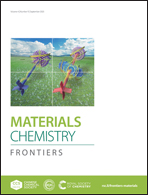Ultrahigh rate capability supercapacitors based on tremella-like nitrogen and phosphorus co-doped graphene†
Abstract
The incorporation of heteroatomic atoms into the graphene crystal lattice not only effectively introduces the bandgap but also increases the defects and the localized reactivity of the graphene, and thereby the remarkable electrochemical properties of graphene are imparted. The phosphorus (P) and nitrogen (N) co-doped graphene (PNG) electrode materials are prepared by a one-step hydrothermal method and look like tremella with bent and wrinkled structures, which facilitates the construction of a multiple thin-wall electrolytic cell. The amount of ammonium dihydrogen phosphate is controlled to adjust the PNG morphology. The 20PNG electrode material exhibits a high specific capacitance of 348 F g−1 at a current density of 1 A g−1. When the current density is increased to 50 times, the specific capacitance value is still 83% of the initial value, which indicates that 20PNG has an extremely high rate performance. Additionally, the symmetric supercapacitor 20PNG//20PNG shows a high energy density of 34.7 W h kg−1 at a power density of 500 W kg−1 in a 2 M Li2SO4 aqueous electrolyte and maintains an initial specific capacitance of 91.4% after 20 000 cycles. Therefore, this simple strategy for synthesizing carbon-based materials will provide a broad opportunity for supercapacitor energy storage applications.



 Please wait while we load your content...
Please wait while we load your content...